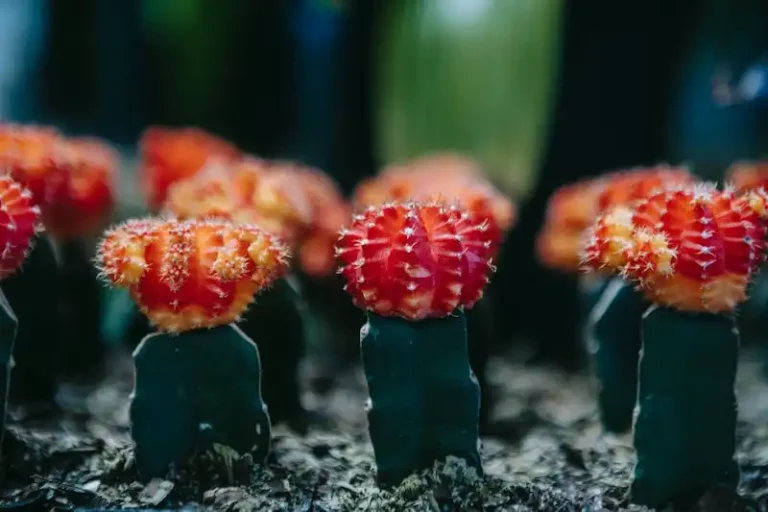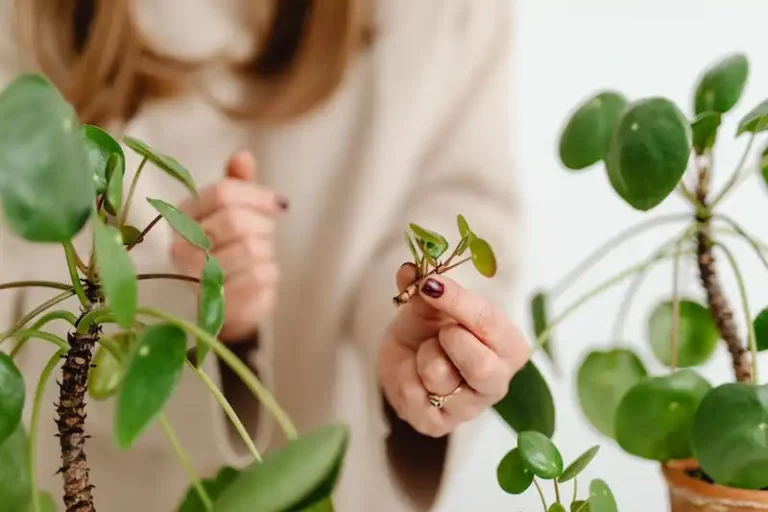Caterpillars can be a real nuisance in the garden, feasting on your plants and causing significant damage. Fortunately, there are several effective solutions that you can employ to combat these pesky pests and protect your precious greens.
One of the most common methods of controlling caterpillars is through the use of systemic insecticides. These solutions work by being absorbed into the plants’ vascular system, which then makes the plants toxic to caterpillars. Carbaryl and malathion are some of the most commonly used insecticides for this purpose.
If you prefer a more natural approach, there are DIY solutions that you can try. For example, you can use bacillus thuringiensis, a bacteria that specifically targets caterpillars. By applying this bacterial solution on your plants, you can effectively combat caterpillar infestations without harming other beneficial insects or your pets.
Another effective method is hand-picking caterpillars early in the morning when they are still sluggish. Simply collect them into a container and dispose of them away from your garden. This may take a couple of weeks of regular inspection, but it can be a rewarding and eco-friendly way to get rid of caterpillars.
Using deterrent plants can also be a natural defense against hungry caterpillars. Certain plants, such as lemon trees and neem, naturally repel these pests with their strong scents. Planting them strategically in your garden can provide a protective barrier that will keep caterpillars from munching on your beloved greens.
If all else fails, there are stronger insecticides available on the market, such as spinosad and pyrethrin-based products. However, it’s important to use these toxic chemicals as a last resort, as they can harm beneficial insects and can be harmful to the environment.
Remember, prevention is always better than cure. Keeping your garden clean and free from debris can deter caterpillars from laying their eggs on your plants. Regularly inspect your plants for any signs of caterpillar activity, and take action early to avoid a full-blown infestation.
Implementing these tips and solutions will help you get rid of caterpillars and protect your plants from damage. With a little bit of DIY effort and a strategic approach, you can enjoy a caterpillar-free garden and the satisfaction of knowing you’ve done it naturally and safely.
Key takeaways:
- Use systemic insecticides like carbaryl or malathion to combat caterpillars.
- Try DIY solutions like Bacillus thuringiensis or hand-picking caterpillars.
- Plant deterrents like lemon trees or neem to protect your greens.
- Consider stronger insecticides like spinosad as a last resort.
- Practice regular garden maintenance and early detection to prevent caterpillar infestations.
What’s eating your citrus tree
If you’ve noticed that something is munching on the leaves of your citrus tree, it’s likely that you have a caterpillar problem. Caterpillars are hungry little creatures that feast on the leaves and fruit of your trees. They can cause significant damage if not properly dealt with.
There are several solutions to protect your citrus tree from caterpillars. One option is to use bacillus thuringiensis, a natural bacteria that is safe for humans and pets but deadly to caterpillars. You can apply it topically to the leaves to get rid of these pesky pests.
Another homemade solution is neem oil. Neem oil can be sprayed onto the leaves and fruit of the tree to repel caterpillars. Simply mix one tablespoon of neem oil with three tablespoons of dish soap and spray the mixture onto the affected areas.
If you prefer a stronger approach, you can try insecticides such as spinosad or carbaryl. These chemicals are effective at killing caterpillars and can be found at most garden supply stores. However, be sure to follow the instructions carefully to avoid any harm to yourself or the tree.
If you’re not keen on using chemicals, another option is to hand-pick the caterpillars off the tree. This method may be time-consuming, but it can be an effective way to combat the problem. Simply look for caterpillars and remove them by hand. You can dispose of them by tossing them into a bucket of soapy water or by squishing them.
Prevention is also key to protecting your citrus tree from caterpillars. Regularly checking your trees for signs of infestation, such as chewed leaves or nesting caterpillars, can help you catch the problem early. Additionally, keeping the area around your trees clean and removing any fallen leaves or fruit can prevent caterpillars from finding a place to nest.
In summary, there are several measures you can take to control caterpillars and protect your citrus tree. From homemade solutions to insecticides, there are options for every preference. By being proactive and taking early steps to address the problem, you can keep your trees healthy and free from these pests.
How To Get Rid of Caterpillars
Caterpillars can be a pesky pest for many plants and trees. These hungry insects will eat through leaves, fruits, and flowers, causing damage to your beloved greens. If left untreated, they can cause stress to the plants and even kill them. Here are some tips to combat these caterpillars and protect your plants.
1. Hand-pick: One of the most effective and least toxic methods is to physically remove the caterpillars by hand. Simply pick them off the plants and dispose of them. This method is especially useful for small infestations.
2. Homemade solutions: DIY insecticides can be a great way to get rid of caterpillars. One popular homemade deterrent is a mixture of lemon juice and water. The strong scent of lemon will deter the caterpillars from nesting on your plants.
3. Using Bacillus thuringiensis: Bacillus thuringiensis is a natural bacteria that is toxic to caterpillars. It can be applied topically to the plants and will specifically target the caterpillars while leaving other beneficial insects unharmed.
4. Triple protection: Another way to protect your plants from caterpillars is by using a triple-defense system. Start by treating the plants with a systemic insecticide, which will be absorbed by the plants and make them toxic to caterpillars. Next, use a topical insecticide, like malathion, to kill any caterpillars that have already attacked your plants. Finally, hang insect netting around your plants to keep the caterpillars away.
5. Early intervention: The key to controlling caterpillars is to catch them early before they have a chance to cause significant damage. Regularly inspect your plants and look for signs of caterpillar infestation. If you spot any, take immediate measures to get rid of them.
Remember, prevention is always better than cure. By implementing these tips, you can protect your plants from these pesky caterpillars and keep them healthy and thriving.
Try these easy DIY pest solutions to rid plants of pesky caterpillars and take back control of your garden greens
If you have noticed an infestation of caterpillars in your garden, don’t worry! There are several simple and effective methods to control these pests and protect your plants from damage. Caterpillars can be particularly problematic because they can affect the pollination process and damage the fruits and vegetables you have worked so hard to grow. By taking early action and using the right techniques, you can get rid of these pesky caterpillars and ensure a healthy garden.
Hand-picking: If your caterpillar population is small, you can simply pick them off your plants by hand. This method works especially well for larger caterpillars, as they are easier to spot and remove. Look for their nests or other signs of infestation and act quickly to eliminate them.
Bacillus thuringiensis: Bacillus thuringiensis, also known as Bt, is a natural and effective pesticide that targets caterpillars. It works by interfering with their digestion, making them stop eating and eventually die. This pest control solution is safe for other insects, pets, and humans. Simply spray the affected plants with Bt, following the instructions on the label.
Citrus oil: Citrus oil is another natural remedy that can help get rid of caterpillars. Mix two teaspoons of citrus oil with one quart of water and spray this solution on the affected plants. The strong smell of citrus oil is toxic to caterpillars and will deter them from munching on your greens.
Neem oil: Neem oil is a powerful and organic insecticide that has been used for centuries to control pests. It works by disrupting the reproductive system of insects, making them unable to lay eggs and reproduce. Dilute neem oil according to the instructions on the bottle and spray it on your plants to protect them from caterpillars.
Carbaryl: If you have a large number of caterpillars attacking your plants, you may need a stronger solution like carbaryl. Carbaryl is a broad-spectrum insecticide that can effectively kill caterpillars and other pests. However, it is important to use this chemical with caution, as it can be toxic to other beneficial insects and wildlife.
Triple your efforts: One simple and effective way to deter caterpillars is to combine multiple pest control methods. For example, you can hand-pick the caterpillars off your plants in the morning, spray them with Bt in the afternoon, and use neem oil as a preventive measure in the evening. By using a combination of methods, you create a stronger defense against these pests and ensure a caterpillar-free garden.
Remember, prevention is always better than cure. Regularly inspect your plants for signs of caterpillars, especially in the early stages. Remove any eggs or nests you find and keep your garden clean and free of debris. By implementing these tips and techniques, you can successfully protect your garden greens and enjoy the fruits of your labor.
Method 1 Hand-Pick Your Least Favorites
If you prefer a more hands-on approach to pest control, hand-picking caterpillars can be an effective method. Here are some tips on how to do it:
- Identify the caterpillars: Before you start picking, it’s important to identify the caterpillars in your garden. Some caterpillars may be beneficial, so focus on removing the ones that cause the most damage.
- Wear gloves: Some caterpillars can be toxic, so it’s important to protect your hands. Wear gloves before you start picking.
- Search for caterpillars: Look for caterpillars on the leaves, stems, and fruits of your plants. Check both the upper and lower sides of the leaves.
- Hand-pick the caterpillars: Once you find caterpillars, gently remove them from the plants by hand. You can place them in a bucket of soapy water to ensure they don’t return.
- Monitor regularly: To prevent caterpillars from causing more damage, continue monitoring your plants regularly and hand-pick any new caterpillars you find.
While hand-picking caterpillars can provide short-term relief, it may not be a practical solution for larger infestations or for larger plants like fruit trees. In such cases, you may need to explore other pest control methods.




